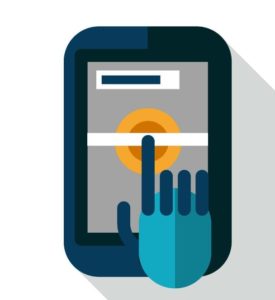
Last week, we kicked off The Future of Finance special event at FindBiometrics with a look at how less is more in financial services technology, with the sector shifting to passwordless, frictionless, and contactless solutions. This week, we’ll focus on a related, hugely important trend – the rise of mobile financial services.
With smartphones now ubiquitous and an integral part of our culture, it can be hard to remember just how recent this technology arrived on the scene: even a decade ago, only about 20 percent of Americans were using the devices, whereas today, that number is over 70 percent, according to data from Statista.
And, as we all know, smartphones are not being used just to make calls and send messages. Mobile technology has become integral to all kinds of digital transactions, and this is no less true in the financial services sector. A 2016 report from Javelin found that mobile banking enrollment was skyrocketing in the middle of the decade, rising from seven percent in 2014 to 30 percent the next year. At the end of the decade, a Business Insider survey found that 89 percent of respondents were using mobile banking, and the number jumped to 97 percent for millennials – pointing very clearly to a mobile-dominated financial future.
The Mobile Biometrics Revolution
All of these trends have coincided with the mobile biometrics revolution that has unfolded over the past several years. Apple started blazing the trail with its introduction of the iPhone’s Touch ID fingerprint scanning system in 2013, prompting a wave of rival mobile authentication systems to emerge in the following years. Later in the decade, face-scanning authentication systems starting popping up on smartphones – a trend that was accelerated by another big move from Apple when the company pivoted to its Face ID security system at the end of 2017. The result of this trend is that today, it’s relatively uncommon for a new smartphone to lack any kind of biometric technology, with fingerprint and facial recognition remaining the modalities of choice.
Naturally, it didn’t take very long for banks to start capitalizing on the emerging biometric capabilities of mobile devices. Financial services providers began to incorporate biometric authentication systems into their own mobile apps, allowing users to log into their accounts through a fingerprint or (later) face scan, rather than relying on usernames and passwords. It was embraced as a means of reducing friction while improving security, and quickly became a major component of a larger trend in which the financial services sector has embraced biometric authentication across a range of channels – a broader market that Goode Intelligence has projected to reach a value of $4.8 billion by 2023.
State-of-the-Art Solutions
By now, the solutions available have become particularly sophisticated. Banks are turning to solutions providers like Nok Nok Labs for multimodal authentication platforms that can be used to secure various digital channels, while selfie-based authentication solutions like those offered by FacePhi and Onfido can facilitate not only mobile account logins, but even remote customer onboarding.
Meanwhile, behavioral biometrics systems like that of BioCatch have emerged that are designed to assess patterns in customer behavior – things like how they type and even how they hold their smartphone – to find signs of unusual activity that can flag potential fraud. Banks are increasingly turning to these innovative solutions to add a whole new layer of security to online sessions – a frictionless one that is invisible to end users.
Beyond the Pandemic
These kinds of authentication technologies are only becoming more important in the wake of COVID-19. With its attendant mandates for social distancing and limitations on bank operations at the branch level – not to mention the basic fear of contagion – the pandemic is pushing a whole new cohort of bank customers to online channels, and making digital banking all the more appealing for those who had already started to use it.
For banks and other financial services providers, this prompts the need to make mobile account access as easy and secure as possible – a demand that biometrics are well-equipped to meet. It also means implementing new security elements, such as behavioral analytics systems running in the background, to guard against increasing rates of fraud within authenticated banking sessions. All of which means that the mobile banking and mobile biometrics trends that have become so clear over the last decade are only going to accelerate, pointing to a clear picture of one important aspect of The Future of Finance.
*
The Future of Finance special event is made possible by our sponsors: Onfido, BioCatch, Nok Nok, and FacePhi.
–
June 12, 2020 – by Alex Perala








Follow Us